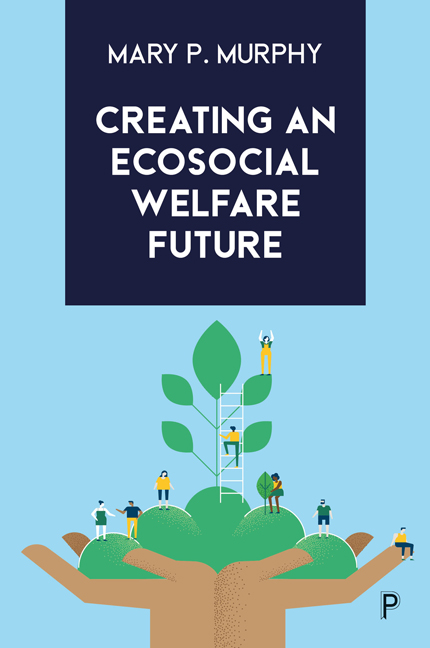Book contents
- Frontmatter
- Dedication
- Contents
- List of figures and tables
- Acknowledgements
- Introduction: The case for a welfare imagination
- PART I From problems to solutions: a post-growth ecosocial political economy
- PART II Building an ecosocial imaginary
- PART III An ecosocial political imaginary
- Conclusion: The case for systemic transformation
- Appendix: Ireland
- Notes
- References
- Index
9 - Achieving change through high-energy democracy and coalition-building
Published online by Cambridge University Press: 20 January 2024
- Frontmatter
- Dedication
- Contents
- List of figures and tables
- Acknowledgements
- Introduction: The case for a welfare imagination
- PART I From problems to solutions: a post-growth ecosocial political economy
- PART II Building an ecosocial imaginary
- PART III An ecosocial political imaginary
- Conclusion: The case for systemic transformation
- Appendix: Ireland
- Notes
- References
- Index
Summary
This chapter returns to the central theme of structure and agency. We organise collective decision-making through structural power and institutions that are often controlled by elites, while transformative change happens most often through the agency of people power, mobilisation and collective action. The relationship between the two is vital. The tremendous structural power of capital, corporations and elites has to be taken seriously, but so too does our own capacity and power as a force for transformation. Key to this force is the relationship between mobilisation and democratic institutions. Some forms of democratic structures are more enabling of agency. While there is no single transformative pathway to making ecosocial welfare happen, all pathways require two dimensions: more democracy (more equalising structures) and mobilised citizens (more agentic power).
The first section of the chapter briefly contextualises the structural power of capital, corporations and elites. It then addresses the importance of engagement of people in ideational debate in rich forms of participatory and deliberative democracy, what Unger (2011) calls a ‘high-energy democracy’. The second section discusses strategies for collective mobilisation, arguing coalition-building and mobilisation around gender and social reproduction, environmental and traditional distributional concerns about income equality and public services could inspire a new politics or a triple movement (Fraser, 2013; Kishimoto et al, 2020). The chapter concludes by discussing Ireland from the perspective of movement-building, examining various constellations of actors and clusters of mobilisations.
Structure: contesting capital through high-energy democracy
The structural power of capital
Chapter 1 reflected on how 16th-century capitalism emerged as a form of political economy on the back of organised violence and systematic destruction of society through excessive profit and accumulation, and in processes of colonialisation, imperialism, war and famine (Polanyi, 1944; Folbre, 2021; Hickel, 2021, p 78). The ecological damage and structural inequality discussed in Chapters 2 and 3 relates to how 21st-century capitalism, in the form of neoliberalism and increasing financialisation, has narrowed ownership of wealth and assets (land, fossil fuels, nature, information technology, digital platforms, intellectual property), so they are concentrated in the hands of a small number of wealthy corporations and individuals (Jones, 2018, p 159; Razzouk, 2022).
- Type
- Chapter
- Information
- Creating an Ecosocial Welfare Future , pp. 141 - 159Publisher: Bristol University PressPrint publication year: 2023



